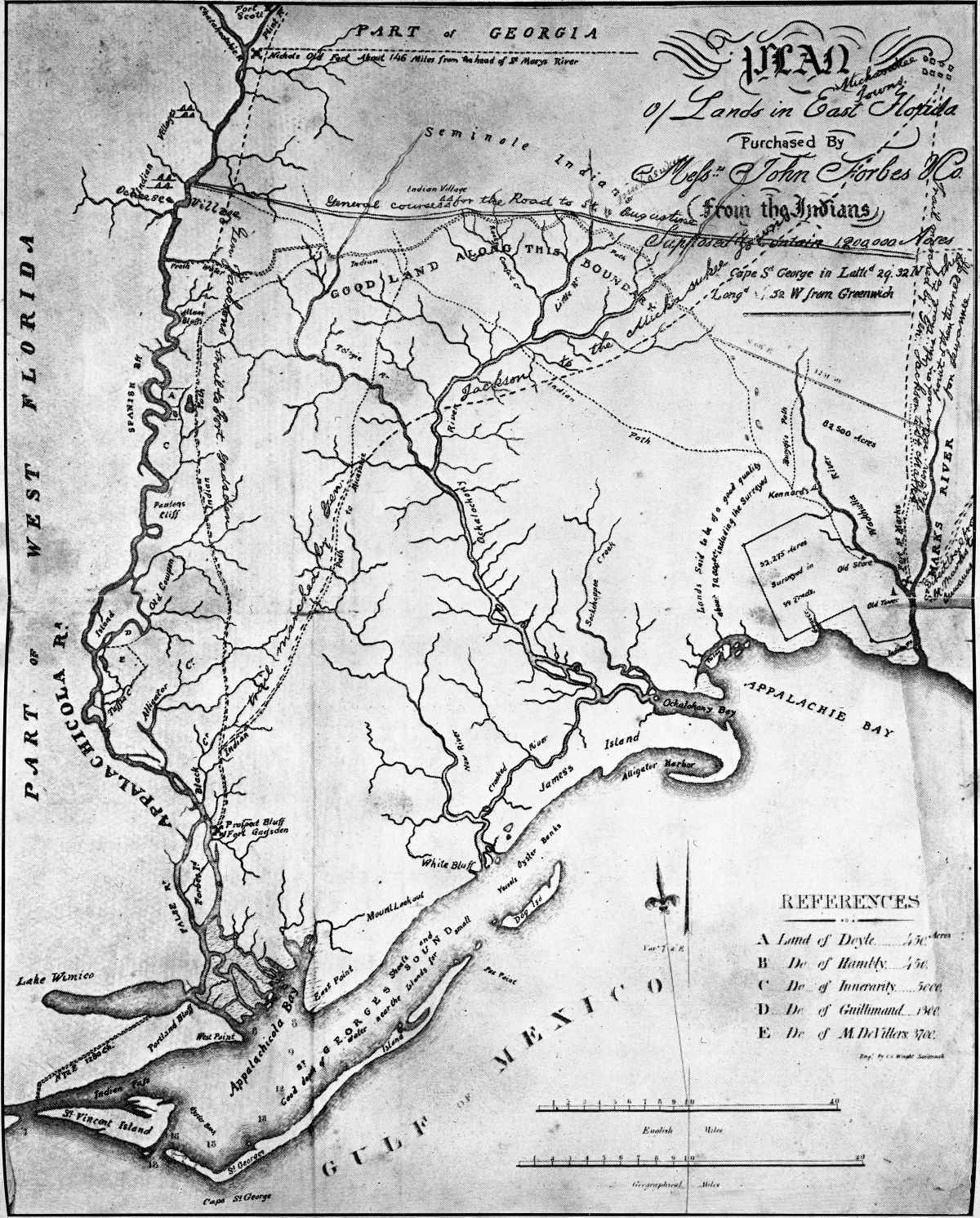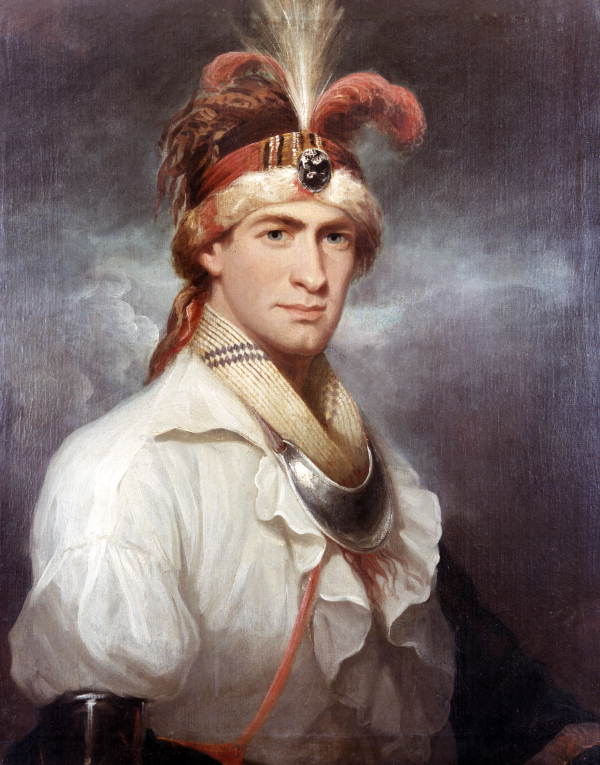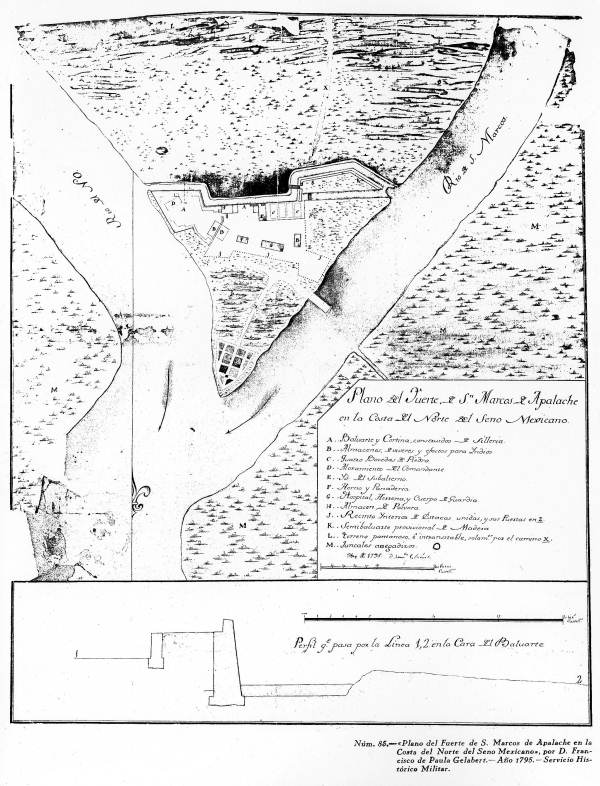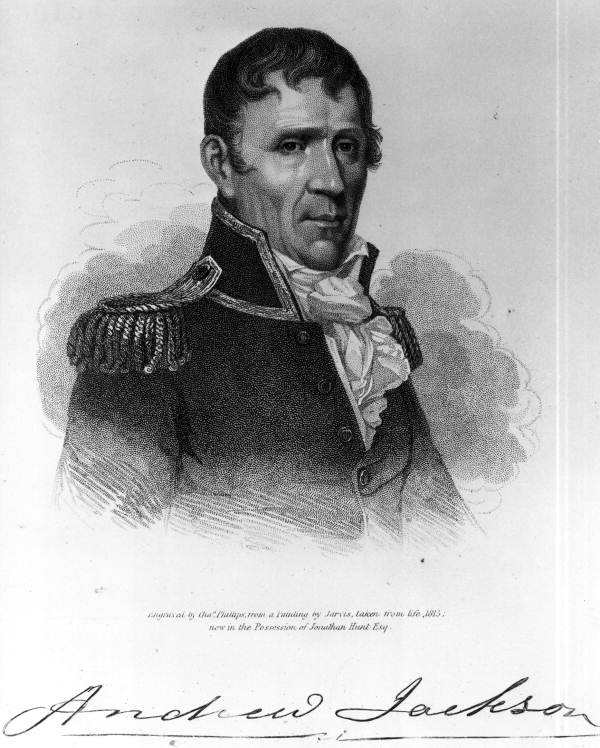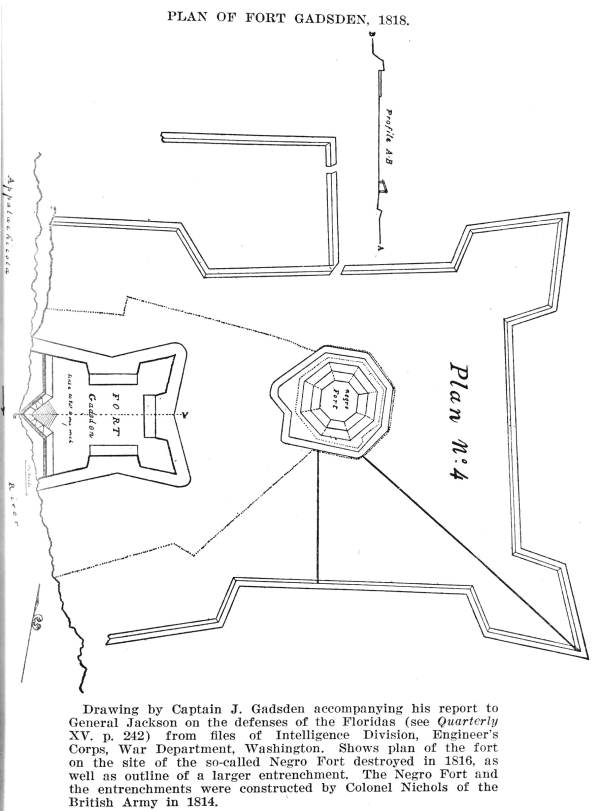Description of previous item
Description of next item
British Intrigue and the Events at Prospect Bluff
Published July 7, 2012 by Florida Memory
Although not part of the United States during the War of 1812, Florida witnessed its share of fighting between Spanish, British, American, African and Native American belligerents involved in the protracted conflict.
Conventional histories of the War of 1812 end the conflict with Andrew Jackson's campaign against Pensacola and New Orleans in 1814 and 1815. However, for African and Native American peoples in the southeast, the war continued after the fighting ceased between the British and the Americans.
In the summer of 1814, several British vessels arrived at St. George Island along Florida's Gulf Coast. They carried supplies for the construction of a fort along the Apalachicola River. In the waning stages of the War of 1812, the British hoped to continue the conflict in Spanish Florida with the help of Native Americans and Africans hostile to the United States.
A circa 1817 map of the Forbes Purchase. St. George Island is in the lower left portion of the map. The "Negro Fort" was located on the Apalachicola River near Prospect Bluff.
Prior to the War of 1812, several agents of the British Empire, most notably William Augustus Bowles, attempted similar schemes to enlist black and Indian allies in armed struggles against the Americans with the goal of wresting control of Florida away from the Spanish. Bowles seized the Panton, Leslie & Company trading post on the Wakulla River in 1792. Panton, Leslie & Company, a Scottish-owned firm, enjoyed a monopoly over the Indian trade in West Florida. The Spanish granted the firm these rights as they were unable to satisfy Creek and Seminole demands for trade goods themselves. The Spaniards apprehended Bowles and sent him to a prison in the Philippines.
The intrepid Bowles escaped incarceration and returned to Florida in 1800. This time he besieged Fuerte San Marcos de Apalache, forcing the Spanish to withdraw. Shortly thereafter, an expedition sailed from Pensacola and expelled Bowles. He was later captured by the Spanish, who imprisoned him in Havana, Cuba, until his death in 1805.
Despite Bowles' failure, the British did not give up the idea of using Spanish Florida to launch operations against the Americans. The War of 1812 provided the opportunity. Shortly after British soldiers arrived at St. George Island opposite the Apalachicola River in the summer of 1814, they built a fort about 15 miles from the river's entrance at a place called Prospect Bluff and stockpiled weapons inside. Following Andrew Jackson's crushing blow against Pensacola in 1814, the British soldiers abandoned the fort and left it in the hands of escaped slaves and a diverse mixture of Creek, Seminole and Choctaw warriors.
Word of the fort and the nature of its inhabitants soon reached the Americans. Jackson wrote to Spanish officials that if they did not destroy the fort and secure the return of runaway slaves entrenched there, the United States would. In response, Spanish officials told Jackson they did not have the resources to attack the position, now known as the "Negro Fort."
The Americans quickly took matters into their own hands. By early 1816, the Americans constructed a fort upriver from Prospect Bluff near the confluence of the Flint and Chattahoochee rivers. The Americans began scouting Negro Fort and assessing the potential for dispersing its protectors. On July 20, 1816, 116 soldiers landed north of the fort to prepare for an attack. Creek Indians friendly to the United States, under the command of William McIntosh (also known as Tustunggee Hutkee), began small arms fire at the fort in order to occupy the artillery.
Then, on July 27, the Americans decided to launch an attack from gunboats in the Apalachicola River. After firing to establish range, the first hotshot (heated ordinance) landed directly in the powder magazine and blew up the entire structure. Those on the scene recounted the horror found within the crumbling walls of the fort. Nearly 300 perished when the Negro Fort was destroyed. The Americans recovered an estimated $200,000 worth of firearms and ammunition from inside the fort.
Following the destruction of the Negro Fort, runaway slaves and their Indian allies fled east towards the Miccosukee towns and the Suwannee River. A year and a half later, Andrew Jackson returned to Florida and continued his campaign against blacks and Native Americans during the First Seminole War (1816-1818). This conflict paved the way for the transfer of Florida from Spain to the United States in 1821, and set the stage for the Second (1835-1842) and Third Seminole Wars (1855-1858).
Cite This Article
Chicago Manual of Style
(17th Edition)Florida Memory. "British Intrigue and the Events at Prospect Bluff." Floridiana, 2012. https://www.floridamemory.com/items/show/254519.
MLA
(9th Edition)Florida Memory. "British Intrigue and the Events at Prospect Bluff." Floridiana, 2012, https://www.floridamemory.com/items/show/254519. Accessed December 21, 2025.
APA
(7th Edition)Florida Memory. (2012, July 7). British Intrigue and the Events at Prospect Bluff. Floridiana. Retrieved from https://www.floridamemory.com/items/show/254519

 Listen: The Gospel Program
Listen: The Gospel Program